South Korea is renowned for its rapid adoption of technological advancements and its deep integration of social media marketing and mobile devices into daily life. Boasting one of the world’s fastest internet connections and an internet penetration rate of 97.4%, the country offers a highly connected environment ideal for digital marketing.
According to Datareportal, at the beginning of 2025, there were 50.4 million internet users in South Korea, making it a promising market for foreign companies aiming to expand their online presence.
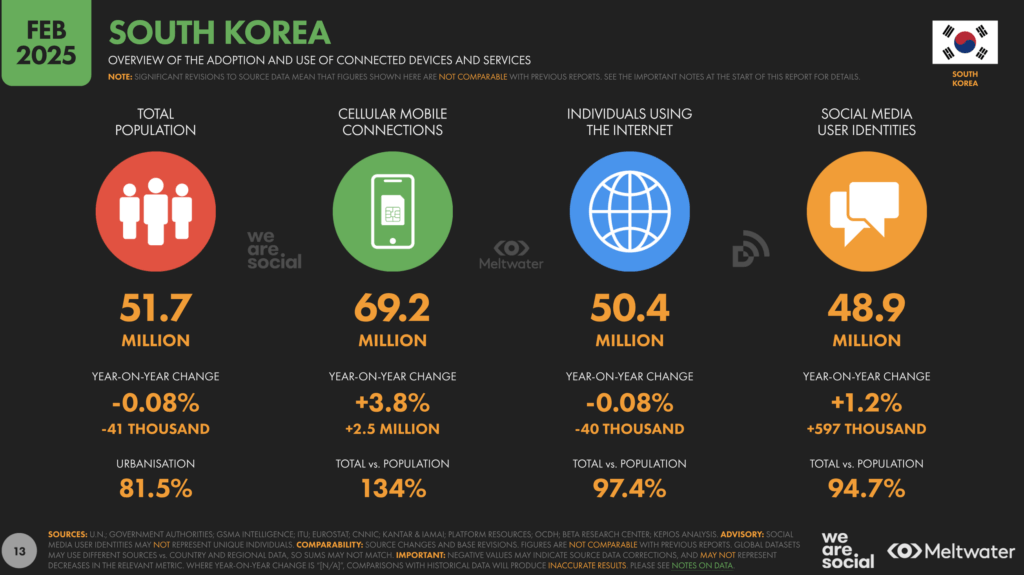
Korean Social Media Statistics Overview
Given South Korea’s highly connected population, we would expect to see high engagement with social media platforms, and that certainly is the case. As of February 2025, there were 48.9 million social media users in South Korea, an increase of 597 thousand (+1.2%) from 2024. This represents 94.7% of the country’s population.
On average, South Koreans spend 1 hour and 14 minutes a day on social media, using 4.4 different platforms. Usage is evenly split between men and women, with each group accounting for 50% of users.
The graph below illustrates the main reasons why Koreans use social media:
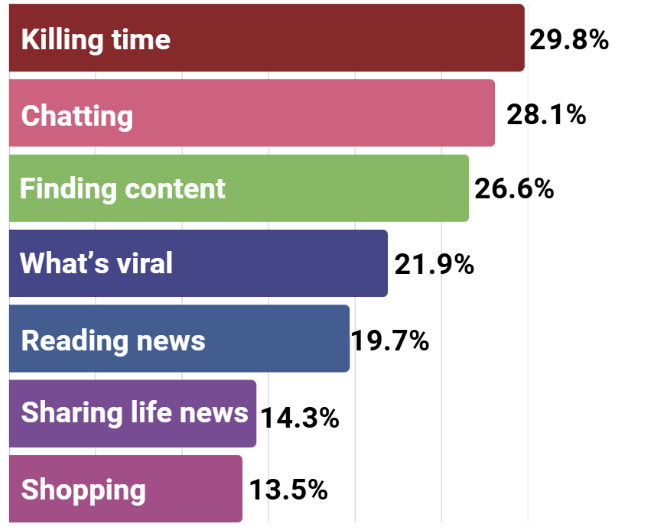
Killing time is a category prevalent across all countries; however, South Korea has one of the highest rates (29.8%). This is speculated to be predominantly due to the amount of time people spend travelling every day. Other activities they do are chatting (28.1%), finding content (26.6%), and checking the latest trends (21.9%). A bit less relevant is reading the news (19.7%), posting content on apps such as Naver Blog or Instagram (14.3%), and lastly, shopping, which is done only 13.5% of the time.
Most Popular Social Media Platforms in South Korea
South Korea has several social media platforms that people outside the country may not be familiar with, alongside the more commonly used platforms like Instagram, TikTok, and YouTube. The graph below illustrates the penetration rate of each platform.
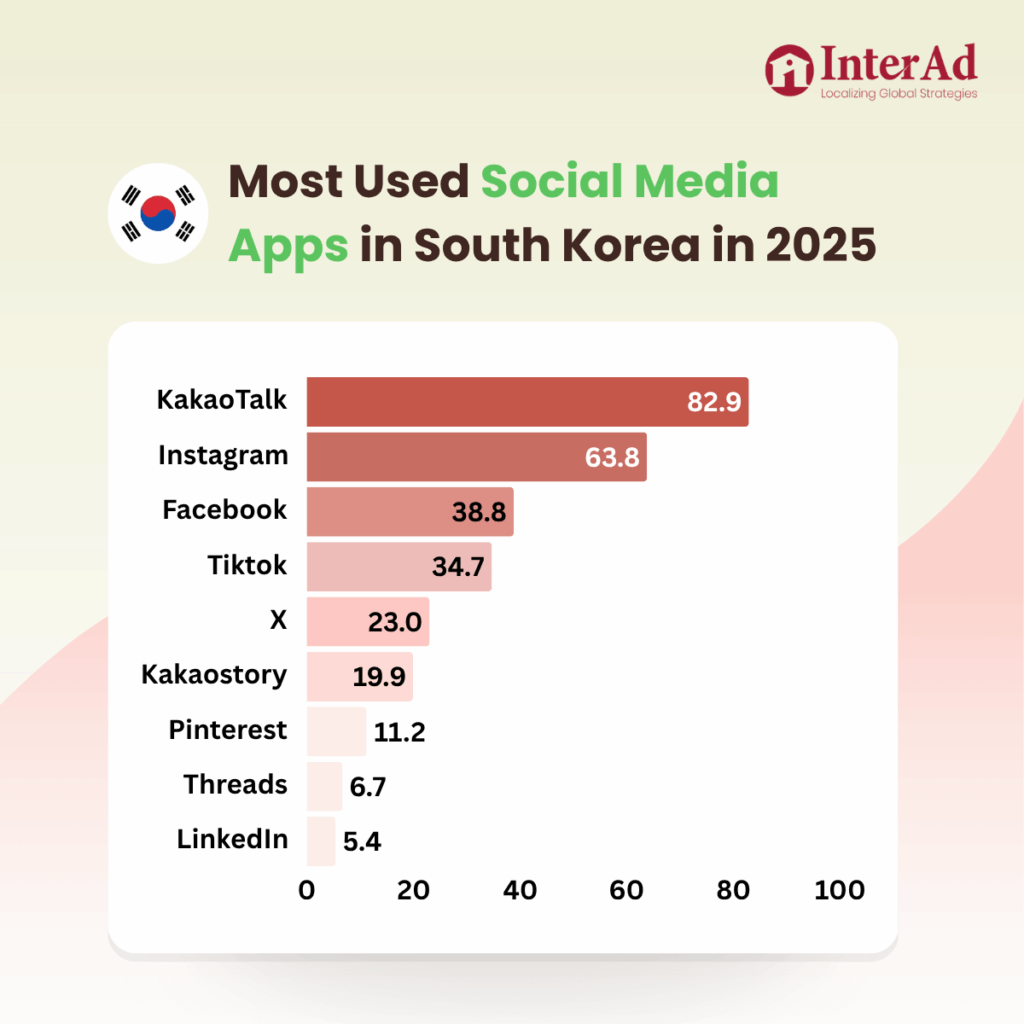
KakaoTalk
Among the country’s domestic platforms, KakaoTalk stands out with a total of 48.9 monthly active users. KakaoTalk is a messaging app similar to WhatsApp, which South Koreans primarily use to stay in touch with family and friends, and it is the preferred app by 49.7% of the surveyed population.
With so many users, Kakao has become a great channel for brands to communicate with consumers, both via Kakao display ads and Kakao channel. Learn how to take advantage of this by reading our KakaoAds article or our service page.
With 23.6 million users, Instagram is growing rapidly, especially among younger generations who prefer short-form content and a minimalist layout. It is used by 63.8% of internet users, and it is the app of choice by 22.5% of them. Users spend around 6 hours per month on average scrolling on the platform, 5.2% more than last year. This is the fastest growing social media platform in South Korea – learn why by reading our news coverage.
TikTok
Another rapidly growing platform is TikTok. In 2025, the platform had 7.18 million users, those aged 18 and above represent 15.9% of the total population. It might not seem very impressive compared with other platforms, but user retention is quite high. Users on TikTok spend an average of 19 hours and 54 mins per month watching short-form videos (17.8% more than in 2024), which is more than 300% of Instagram’s usage time. This means that depending on your sector, you might want to include TikTok marketing in your strategy in the country.
Facebook continues experiencing a decline in popularity despite the new Meta updates. The platform is only preferred by 3.4% of users. The total potential reach of ads on Facebook as of February 2025 is 8.4 million, 650,000 less than the previous year and 15 million less than Instagram.
Facebook is especially unpopular among young people. Even though South Korea has an aging population, this does not warrant a heavy allocation of budget towards such campaigns.
Despite the large number of qualified professionals in the country, LinkedIn is not a popular app in South Korea. LinkedIn had around 4.6 million users in early 2025, a 3,000 increase from the previous year – this reflects an increase of 0.07%.
X (formerly known as Twitter)
X (formerly known as Twitter) resources indicate that the micro-blogging platform had 10 million users at the beginning of 2025, 65.8% of them female. The platform is used for “fan content” where people post about their favorite Idols, actors, and dramas. X is a great platform to advertise your business if your targeted audience is this. Compared to western companies, those in South Korea do not share any updates on this platform – instead, they use Naver Blog, Naver Café, or news PR.
YouTube, the King of Content
Perhaps you were wondering about YouTube? This social media app is so influential in South Korea that it deserves its own section. With a potential reach of 43.4 million users (91%), YouTube is the king of the game. YouTube’s users spend an average of 43.26 hours per month watching content. The favorite topics on the platform are illustrated in the graph below – the bigger the circle, the more popular it is:
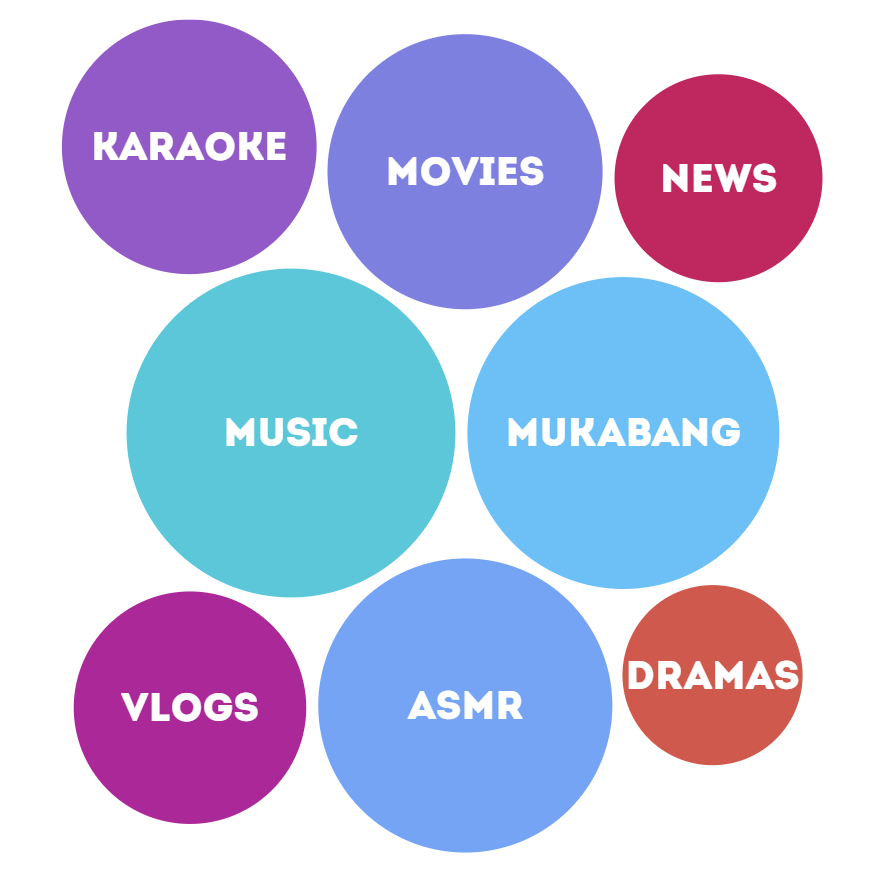
The most popular topics are Music (YouTube music is very popular in South Korea), Mukbang (people eating food), ASMR (satisfying sounds, which are sometimes combined with the Mukbang category), and Movies. Other, less popular topics but still with a noticeable market share are – Karaoke (especially popular during exam season because students use it to let out their emotions), Vlogs, Dramas (especially popular are the Korean and Chinese ones), and News.
According to Reuters, while Koreans’ consumption of news has been on a decline, when they do check the news, they tend to do so through online sources, making up 79% of the news consumption in the country. Of the social media sites used to consume the news, YouTube was used the most for that, with 51% of respondents saying they use the site to consume and share news. Koreans tend to see the video platform as a more authentic source than mainstream media, which is viewed as biased.
Continue reading about digital media trends & news consumption in South Korea.
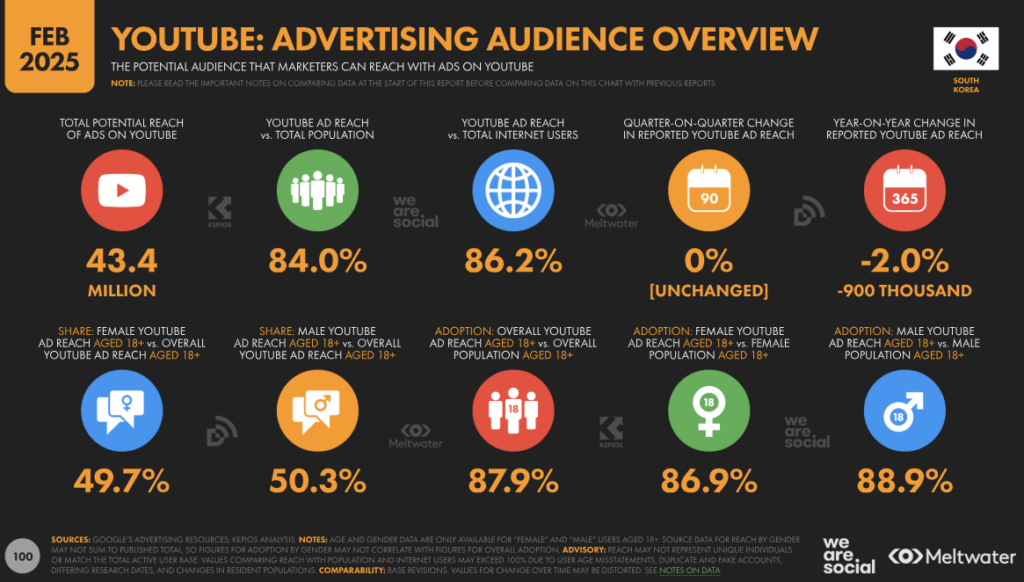
Continue reading about YouTube in South Korea:
Naver Blog
Naver Blog works similarly to X (Twitter). It is a place where people go to share their lives and experiences in detail, rather than an Instagram post. Due to the lengthy nature of the posts, many people read blogs to gain information about products, places, and services.
Having a blog on Naver is a great way to gain brand awareness and earn the trust of your potential clients.
Read more about Naver Blog:
Naver Café
Naver Café is a community-based platform similar to Reddit or other online forums. There are over 100 categories for users to chat about. Take advantage of this by advertising on Naver Café – an innovative marketing strategy currently only offered by less than 3 agencies in South Korea.
Get familiar with Naver Café by reading our startup guide.

The Future of Social Media in South Korea
As the popularity of social media in South Korea continues to grow, companies are investing more in online marketing services to target this market. Social media has become a crucial channel for companies to reach customers in South Korea, with Instagram and YouTube ads being particularly popular. As South Korea continues to lead the world in terms of internet connectivity and mobile adoption, the country is likely to remain an attractive market.





